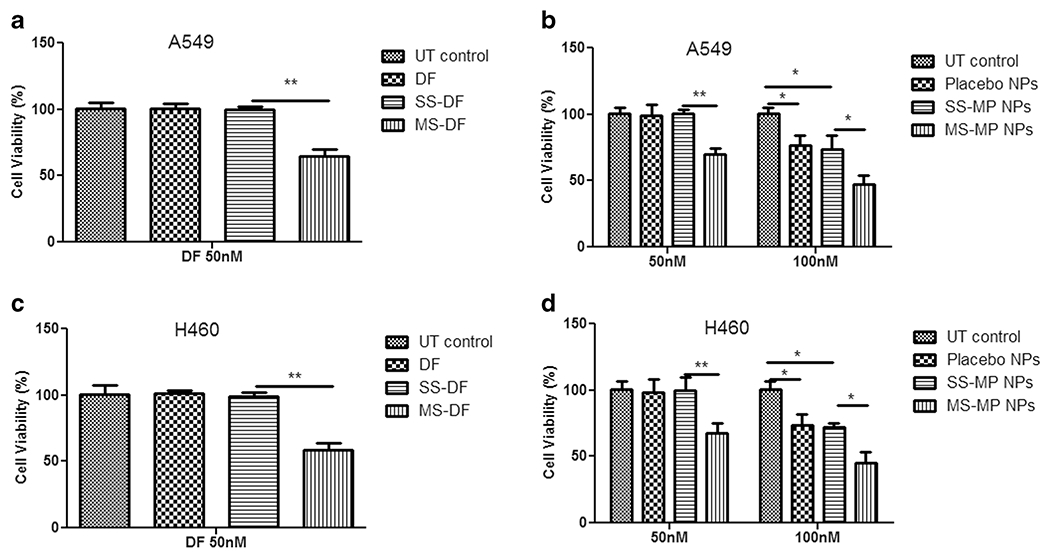Fig. 10.

Cell viability (%) of mTOR siRNA with commercial transfection reagent Dharmafect (DF) and mPAE based NPs in A549 cells (a and b) and H460 cells (c and d) seeded at density of (5 × 103 cell/well and 6 × 104 cells / well for A549 and H460 cells respectively) at 48 h incubation. mTS-mPAE-NPs(mTOR-siRNA – mPAE nanoparticles) and SS-mPAE-NPs (Scrambled-siRNA – mPAE nanoparticles) prepared at 45:1 weight ratios were incubated with cells at a concentration of 30 and 60 μg/ml of mPAE polymer to achieve 50 nM and 100 nM siRNA concentration, respectively. Figure (a) and (c) indicates the cell viability (%) of the A549 and H460 cells after transfection with scrambled siRNA and mTOR siRNA using DF reagent. Figure (b) indicates the cell viability (%) of the scrambled siRNA and mTOR siRNA encapsulated mPAE NPs in A549 cells and (d) indicates the cell viability (%) of the scrambled siRNA and mTOR siRNA encapsulated mPAE NPs in H460 cells The results are presented as mean ± SD (n = 3). A value of p less than 0.05 was accepted to be significant (**p < 0.01, *p < 0.05) and the statistics were performed with Student’s t test.
